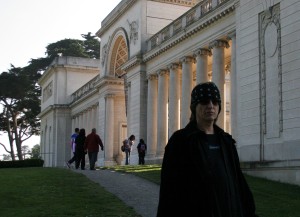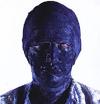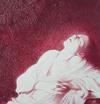Press and Media
Artweek – October 1, 2004
GOTTFRIED HELNWEIN AT THE LEGION OF HONOR
Helnwein is the next generation's final ally, a skilled provocateur forcing us to confront the legacy we have bequeathed upon our children. Helnwein is our chronicler, our conscience, the antidote to our failing memories. He refuses to let us forget...
Gottfried Helnwein's first one-man exhibition at a major American museum is long overdue. 35 years in the making, "The Child" is a collection of more than fifty drawings, watercolors, photographs, and paintings (several monumental in size). It's also a show that shocks, and among the crowds thronging to see it, some patrons will be put off: the day I attended, a few seemed downright uncomfortable, if not hostile, toward the work. This is fine. Art should shock, and provoke, and make us feel queasy sometimes.
"The Child" achieves all three, but also startles us with aching beauty, bedazzles us with painterly skill, and injects a necessary perspective into the culture's collective conscience.

The show commands the Legion's southeast corner, a cul-de-sac just past galleries of Flemish, Mannerist, and Italian Renaissance paintings. This makes good sense, since the artist draws from them
— as well as from Gerhard Richter, Chuck Close, Cindy Sherman, Lucien Freud, Warhol, Picasso, and Walt Disney. His subject is children, and his opening image, Kindskopf V, that of a young girl, is almost singularly magnificent.
(It is trumped only by Kindskopf III, the ten-by-seven-foot piece further inside.)
The portrait collides Richter's early-1990's photorealism with Close's mammoth scale, and its execution, down to the fine brushstrokes that comprise his subject's' individual eyelashes, is flawless.
Most of the other children, however, don't fare so well. Drawn with myriad physical deformities — cleft palates, brutal scars, gauze-wrapped hands, heads, and limbs — they combine to reflect a mix of despair, abuse, loneliness, ostracism, and (most fearfully) stoicism. Embarrasing's subject looks like an abandoned doll propped against a wall; the girl in I Walk Alone (Amazing Little Justitia) picks her way blindfolded through a street littered with bodies;
Stage Fright finds its figure pinned upon a platform; three of the largest works, Angels Sleeping IV, V, and VI, portray malformed fetuses floating in some kind of fluid.
What is the artist driving at? Is he some sort of sadist? An anti-abortionist?
Just the opposite, actually. A post-WWII Austrian who endured a strict Catholic upbringing, Helnwein perceives a world set upon brutalizing its progeny, and forces us to examine the risks children face daily from physical, emotional, economic, or environmental harm.
Their caretakers have forsaken them, he believes, and their only relief comes from Disney or other sinister corporate sources. Livid at our short memories and closed eyes, the artist is intent on tweaking both, making us face what we have done. He is the next generation's final ally, a skilled provocateur forcing us to confront the legacy we have bequeathed upon our children.
Even his healthy children can be tainted, however, and the best examples of Helnwein's thinking are a series based on well-known Realist and Gothic paintings. Epiphany II (Adoration of the Shepherds) reinterprets Jacopo Bassano's subjects as Nazi brownshirts, gloating over what is evidently a healthy young Aryan.
Epiphany I (Adoration of the Magi), does something similar with Gentile da Fabriano's painting, and Epiphany III (Presentation at the Temple) with Melchior Broederlam's.
Helnwein's images are, like all his paintings, superbly crafted, and their subjects, like a series of 1930's-era photographs, chill us with their fascist echoes.
Mounting such an exhibition is risky these days, as the nation faces daily casualties from Iraq, softcore fascism, and the ghosts of 9/11 that rise up in the presidential campaign. But given the choice between a meaningful show and one that's safe and anodyne — SFMOMA's bland "POP," say — it feels important to grit our teeth and lean into the tough stuff. If some viewers are offended, so be it.
Helnwein is our chronicler, our conscience, the antidote to our failing memories. He refuses to let us forget. As the artist proves, the sooner we acknowledge our heirs' poisoned legacy and act to alter it, the better. That too is long overdue.
Colin Berry
'The Child: Works by Gottfried Helnwein' closes November 28 at the
Legion of Honor, San Francisco.
Colin Berry is a contributing editor to Artweek.
go: www.colinberry.net
© 2004 Colin Berry, colinberry.net.


